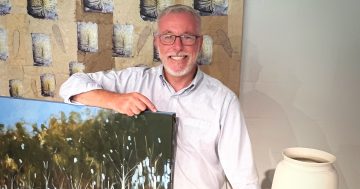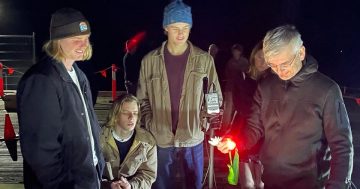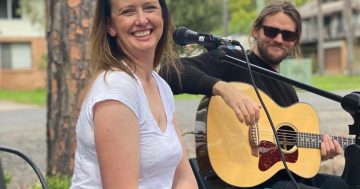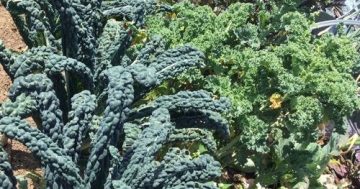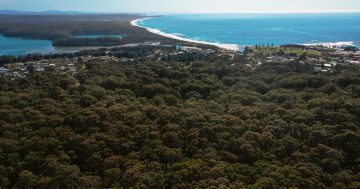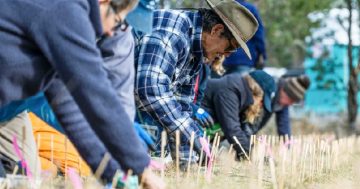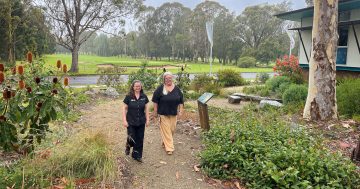
Bees and other animals have returned to the Eurobodalla Botanic Garden as it regenerates after the 2019 bushfire. Photo: Phil Warburton.
Hundreds of plant species run riot in the Eurobodalla Regional Botanic Garden, some not found anywhere outside the region.
Animals flourish in the well-tended bush, where about 120 volunteers put in some 16,000 hours each year.
You don’t need to spend thousands of hours to help experts better understand just how special the garden is, however.
On Sunday, 2 October, the botanic garden will host its first BioBlitz event from 10 am.
BioBlitz is a National Geographic challenge where scientists, families, students, teachers and other community members work together to create a snapshot of an area’s biodiversity.
The challenge is to identify and record as many living things as you can on a walk around the garden.
Ranked as the region’s No. 1 tourist attraction by TripAdvisor, the garden was hit hard by the New Year’s Eve blaze in 2019.
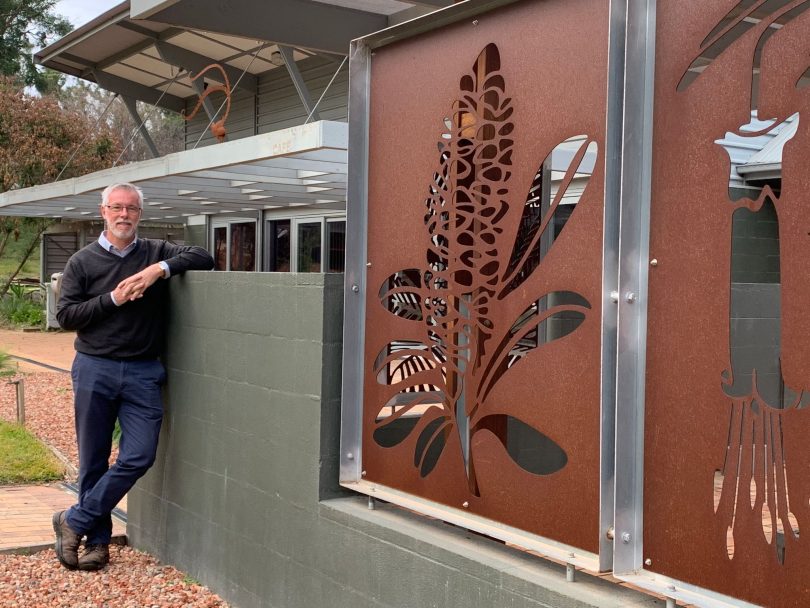
Manager Michael Anlezark at the Eurobodalla Regional Botanic Garden entrance. Photo: Kim Treasure.
More than 95 per cent of the 32-hectare site was seriously impacted, and many precious species of flora were lost.
Since then, Eurobodalla Shire Council staff and volunteers have worked tirelessly to salvage and restore what they could.
Garden manager Michael Anlezark said the BioBlitz would be a fun day for the whole family, and would help create a picture of how the garden had changed since the fires.
Since the bushfires, Mr Anlezark said, the garden had grown rapidly with the help of decent rainfall, and rare species were popping up.
“Last year we spotted the rarely seen East Lynne Midge Orchid, which only occurs in the area between Moruya and Ulladulla,” Mr Anlezark said.
BioBlitz participants can contribute their observations through the iNaturalist smartphone app.
“Data collected through the app will contribute to scientific research and conservation planning across the globe,” Mr Anlezark said.
“All of the plants in the garden are native to the broader Eurobodalla region, which makes it a great place to learn about the local biodiversity.
“The garden also includes a large area of natural forest, which is home to a fascinating array of wildlife.”

A native masked bee at the garden. Photo: Peter Abbot.
iNaturalist was already helping the botanic garden better understand seasons when plants were flowering and what insects were about.
“People have taken beautiful photos of fungi and insects which we would not have been able to appreciate without iNaturalist,” Mr Anlezark said.
The BioBlitz offers hikes for all ages so everyone can get involved.
“We hope to see many people taking photos; we can help with the iNaturalist app as needed,” Mr Anlezark said. “For younger children, we have find-it sheets which do not require a phone.
“For those who just want to come and appreciate the garden in spring and leave their phone in their pocket, that’s OK too.”
For more information or to register for the BioBlitz, visit www.erbg.org.au.



